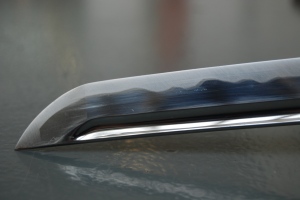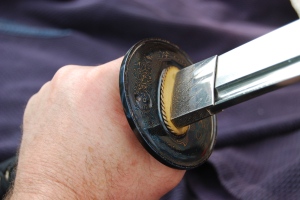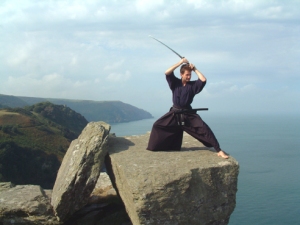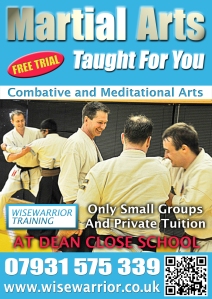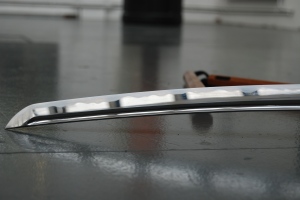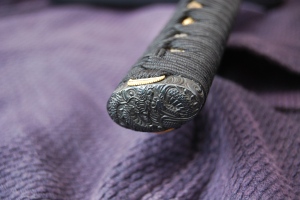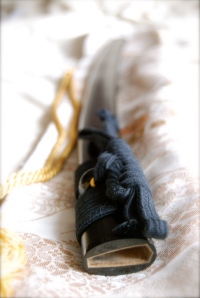“Time for some powerful insights in to the art of sword from one who is really passionate about the subject!
Over to you Dohigh Tam!”
When asked by Richard Sen to write an article on sword, I didn’t know where to begin. So where best to start for me than – “Wiggle your big toe!” Those that know me well will know the significance of this quote from Kill Bill on a number of levels.
The path of Ken Kai Ryu is a long and winding path and has many levels to it. As well as developing oneself physically and mentally, the sword also develops the student on a spiritual level. In some respects the old mythology of a sword being part of the samurai’s soul remains true to this day. For me it has been a means of becoming aware of my original face and getting to know who I am and who I can be. It has given me strength to carry on and wiggle my big toe when at times in the past I would have given up. It has instilled a samurai spirit of never giving in, no matter what the battle of life may throw at me. “You can always die. It is living that takes real courage” – Himura Kenshin
When I talk to people who do not understand the nature of Iaido, I often reflect to them that the sword is not so much about the perceived violence, but about being able to be still whilst moving. The sword requires the student to learn to become at one with it. Until the blade is held, it is a perfect work of art and physics. It will glide through the air with precision and beauty. As the martial artist you have to learn to move as the blade requires you to move in order to maintain its precision and beauty, not the blade move to your requirements. You have have to become one with the blade and you become an extension of its spirit, strength and grace. Sometimes, training can feel like the sword is putting you through the same process that it had to go through to be so perfect. One must be fired, pounded and folded a thousand times, but it is and will be worth it.
Sword, as with any martial art, requires mindfulness when practicing it. However, the sword is a greater teacher at this. If one does not practice mindfulness and lets the mind wander when handling the sword, it will bite you and redirect your mind to where it should be, in the moment and no where else. It is also an art which requires great strength in body and mind in order to achieve the grace required to reflect the beauty of Iaido.
I find a lot of zen philosophy is reflected in practicing sword and in practising sword a lot of zen philosophy is learnt. Some zen philosophy can only be truly understood through experience. One such example was the great grading / demonstration night we had in July.
The whole evening was best summed up by Sun Tzu, “The dance of battle is always played to the same impatient rhythm. What begins in a surge of violent motion is always reduced to the perfectly still”. In each demonstration there was a explosion on strength, knowledge and grace, but each started and ended with a perfect stillness.
I think everyone who worked on their demonstrations with Tim Sen learnt that “To a real warrior, power perceived may be power achieved”. The way we perceived ourselves in our mind has as much an effect on our performance as our physical abilities. Through Tim Sen’s guidance and unusual techniques, I felt able to reach artistic heights I thought unattainable in such a short period of time.
For me, my last zen lesson became reality (I think) during the demonstration. The lesson was about is what we experience reality or not? It all depends on the story we write. I became so lost in the moment of the demonstration of Kim Kiri, that after the session I was unable to recall what did and didn’t happen, just like for Chuang Tzu, “I do not know-
whether I was then a man dreaming I was a butterfly, or whether I am now a butterfly dreaming I am a man”. For that moment, reality became blurred, I did not know whether I was Dohigh Tam dreaming I was a samurai or whether I was a samurai dreaming I was Dohigh Tam. Either way, for that moment I perceived myself as a samurai and was a samurai.
We all have to ability to experience our own reality, but it is up to us to chose whether we do or do not “wiggle [our] big toe”.
“Teachers open the door, but you must enter by yourself” – Chinese proverb.
Tam
For more information about our sword classes then click here!

